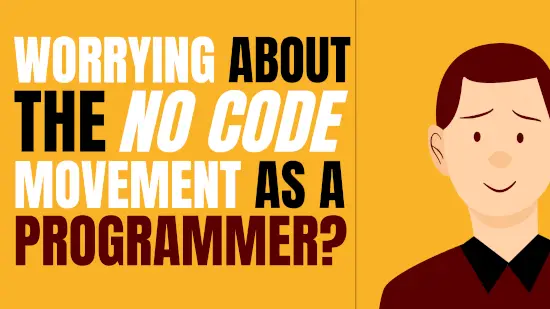There has been an increased interest for the No-Code Movement.
Wait, you said No-Code? How is that possible? Andres are you high?
To answer your last question: No.
Yes, you read it right. No Code. That means ZERO code to develop websites or applications. However, this doesn’t sound coherent. An app must have lines of code.
Ok ok. I agree with the latter. There must be code anywhere to get an app running. How on earth do they call this No Code? The reason it is called a No-Code Movement is because it does not require someone to learn a programming language to build an app. There are several software-as-a-service (SaaS) companies with the mission to empower non-technical people to develop their own solutions and applications. These SaaS provide simple interfaces for you to start building your website, building forms, sending emails to subscribers, or even building apps without having to write code.
These are the most popular No-Code platforms available out there:
- Webflow: Webflow is a website builder that enables web designers to remove the dependency between them and programmers to build websites without knowing code. There are website builders out there, but let me tell you that Webflow is becoming the preference of many freelancers and even big company names such as Dell, ZenDesk, Rakuten, Lattice, and many others. Did you know this website was built on Webflow?
- Bubble: Bubble lets anyone create desktop and web apps. It lets you create a prototype of the app before even investing time creating the app. Bubble also handles deployments and hosting for you making it simpler if you do not have knowledge on these areas.
- Zapier: Zapier is an integration platform that allows users to create “Zaps”. In other words, it allows you to set up triggers based on Zapier’s integrations and define actions to be executed between one to multiple platforms. Think of it as a platform that allows you to set if and then conditions without coding integrations between popular applications such as Mailchimp, Trello, LinkedIn, Instagram, Facebook, and much more.
- Typeform: Typeform allows you to create beautifully designed and high-conversion forms for the web. They turn a simple form into a conversation making it more engaging to the users who often forget they are filling in a questionnaire at the end. The only knowledge you need to have is the questionnaires and a good eye for design.
- MailChimp: Mailchimp provides marketing solutions enabling businesses and/or influencers to send mass emails without the need of writing a single line of code. It lets you build audiences to help you send custom email campaigns. Mailchimp allows you to design responsive email campaigns in a matter of seconds using their built-in templates. Best of all, it provides analytics to get meaningful data such as the bounce rates and click rates to determine the success of your email campaigns. They also have several integrations available to make Mailchimp the marketing software of choice for many applications.
Now that I told you a little bit about the No-Code Movement, Are you getting scared the No-Code Movement will take away many programming jobs?
In my opinion, no.
Although these SaaS companies are providing solutions to allow anyone without programming skills to create websites and applications, in reality, there will be limitations. You can only get so far in development by using these tools, such as creating a startup, but in the end, there will be customizations that require the technical expertise to take an application to the next level.
In case these SaaS companies make their products better, that would mean the opening of more programming jobs as these powerful solutions require a programming skill set that can’t be learned overnight. If you start putting it in perspective, if these SaaS companies make their products more powerful, they will have to allow developers to add custom code.
However, I encourage you to play with any of these No-Code Platforms. I’ve used it not only to develop the website where you are reading this blog, but also Monkey Tattoo’s Website, in which I Integrated Webflow, Zapier, and Mailchimp. I realize it might take some time to get the hang of these platforms. However, in comparison to coding solutions from scratch, these No-Code solutions are quicker to learn. Also, once you get the hang of them, you can build websites and apps fast.
Did you hear that? I said: FAST. Well, I meant VERY FAST.
As a Full Stack Developer, I’m not embarrassed to use No-Code solutions. I simply look for solutions that fit the best based on the business needs in the shortest amount of time possible, and if any of these No-Code platforms have everything needed to get the job done, I will use them to spend less time and be more efficient, while still delivering high-quality solutions.

